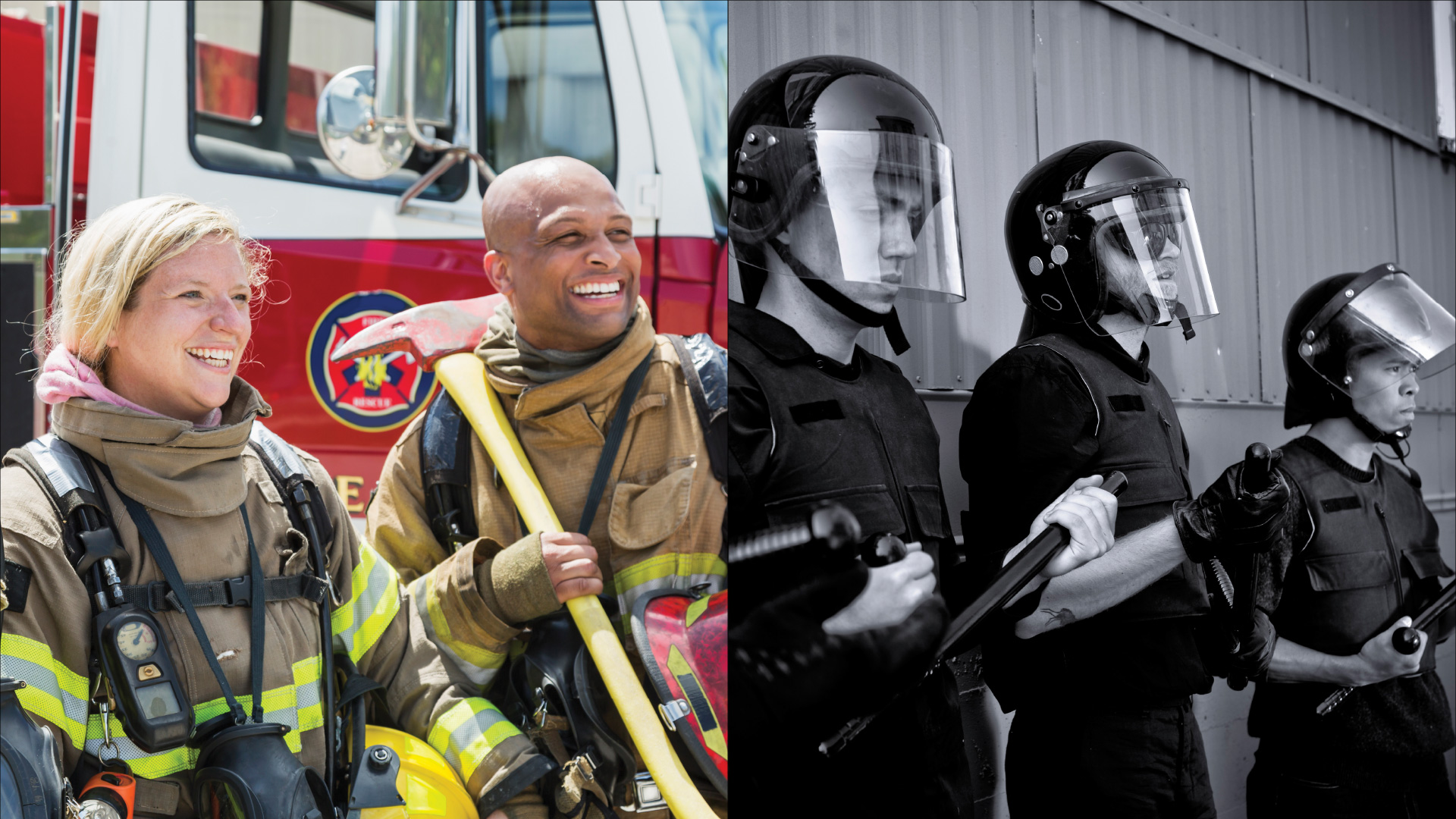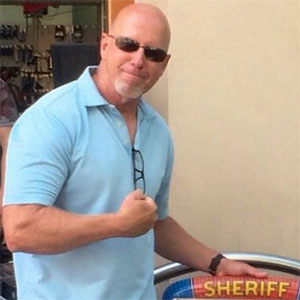
When it comes to disease, there’s a difference between treating the symptoms and finding the cure.
Police officer occupational discontent and job-caused stress are at their highest ever. Many LEOs are finding easier and more rewarding ways to make a living, and for more money, too. There are fewer good applicants, and fewer applicants, period. The commonly blamed causes — things like ineffective leadership, unrealistic workload, poor officer morale and public ingratitude — do deserve consideration. But what if these are just symptoms of a deeper root cause? That’s the way I see it, and I hope that we might finally move the discussion away from blaming the symptoms, toward naming and then curing the disease.
Law enforcement’s longtime inadequate service delivery model is that disease. There are real solutions for this, but unless government starts acting on them soon, the quality of our national police force may eventually merit the current ingratitude. Our service delivery model has not kept up with the ever-increasing demands. Over the decades, responsibilities and regulations have drastically increased, but we’re basically working the same way and with a lot of the same resources we did 80 years ago.
At the same time, however, there does exist a nationwide, widely accepted, highly functional service delivery model for public safety. It provides adequate funding for the mission, as well as maintaining generous, healthy and sustainable occupational conditions for its workers. Because of that, these public safety servants not only fulfill their mission with broad public satisfaction, but also enjoy a high level of job contentment and thrive throughout their careers. And finally, they live long, healthy and happy retirements.
It’s a great public safety model. It’s just not ours.
For the last 25 years, whenever I’ve seen an old, fit guy at the gym, I’ve gone out of my way to greet him. After all, I want to end up the same way. I figure that if there are any patterns to learn, they’ll come to light. It turns out there is one pattern: A lot of them are retired firefighters. Figures. Everybody loves them, they get paid to sleep … and they live forever, too? We know that long-term job stress and inadequate resources make our jobs harder and our lives shorter. Abundant evidence shows that the opposite can be true, too. I call this the Firefighter Corollary.
If you wanted to design emergency responder work conditions that not only support real-life community needs, but also attend to the long-term resiliency of the workforce, here are some things that should be high on your list: assign multiple workers and truckloads of equipment to every call, prescribe critical training hours into every workweek and pay them around the clock — for sleeping, for shopping for groceries, for working out, for going to their kids’ games and even for watching the Super Bowl in the company entertainment room. Although firefighter pay is virtually the same as ours, comparatively, they have an abundantly provisioned, low-stress job, one that sets them up for on-duty mission success and healthy and content off-duty lives. Our occupational realities are just the opposite.
Yes, actual firefighting is dangerous, but an Orange County, California, grand jury year-long study, as well as a 2019 ESO Fire Trends Report, found that only 2% of fire calls were fire-related. Other studies report that upwards of 80% of fire calls are medical runs — you know, perfect situations to assure that you’ll enter and exit every situation as a gratitude-laden hero. When even routine, non-emergent calls get a minimum of three first responders (but almost always more), and when your arrival is always met by hope and admiration, you have a better chance of job contentment and less life stress. It’s no wonder that some cities have to hold lotteries for firefighter selections.
Sure, fire services are critically important, but law enforcement services are critically essential. If a city needed to deconstruct for financial reasons, police services would be the last door closed. Think of Maslow’s Hierarchy of Needs. Right after air, food, water and rest come safety and security. These two things are the most valuable services that government provides, and both come through us. The basis for government is law, and our role is the keeper of it. Most other city services, including fire, can and are being privatized. Our role is constitutionally mandated and never will be. We wield and exert government’s highest authority and powers; literally, we are government-in-uniform, and no community could exist without us. Yet even though our role is the government’s first purpose and its most valuable need, it’s not provisioned that way. Not even close.
There is a real cost to good police work, but the government’s not paying for it … you are, with things like your health, your mental and emotional well-being, and your closest relationships. And also, with your longevity. Sadly, in terms of quality and quantity of life, police officer attrition is a well-known, broadly accepted reality that we’re expected to bear. A study published in the International Journal of Emergency Medical Health and Human Resilience found peace officers’ average life spans to be 21.9 years shorter than the general population. And as for quality of life, compared to the general public we have much higher incidences of divorce, alcoholism, heart attack, suicide, obesity, depression and more. After all, people can only handle so much. And because of what happens to us at work, our off-duty lives are often filled with even greater drama.
Local, state and federal government leaders who hold the purse strings, take note: There is a real fix for all of this. One way to measure value is cost. Do you value us? You say that you want your police force to be able to de-escalate volatile situations better, you want police shootings to go down substantially, you want police credibility and customer satisfaction in the inner cities and elsewhere to increase. Then prove that you value our service and invest in us accordingly. Using the fire services model as your example, start provisioning our service delivery model equally, and you’ll soon see that despite the enormity of our mission, we will succeed on all fronts.
According to a 2016 study by the Justice Department’s Office of Community Oriented Policing Services that measured circumstances surrounding peace officer line-of-duty deaths, the largest single category by far was officers dying alone: 34% of the time, murdered officers did not have backup. Similarly, many if not most officer-involved shootings occur when peace officers are handling volatile situations alone. Could you imagine a firefighter answering any call for service alone? Even so, because of costs, our widely accepted model remains one-officer responses — with a backup rolling on hot calls when available.
Think about those rare occasions when you got to ride double. All of us know how much safer we are when that happens, and how much more effective we are, too. There’s a synergy in working as partners that doesn’t just double our effectiveness and safety; it exponentiates both. By federally mandating two-officer patrol cars — everywhere — most of the present officer-involved-shooting-caused national police crisis could be abated, officer survival would go up and peace officer attrition would go down. For dangerous beats, we should mirror fire service’s three-man minimums.
With the fire services provisioning model as our guide, there are more things we could do. In communities with low graveyard shift call volume, every other officer should be allowed to sleep (shhh, it’s already happening anyway, so let’s make it a right). After all, firefighters not only get paid to sleep, but their unions also negotiate things like “sleep hygiene,” contractual assurances of the quantity and quality of their paid sleep time. In communities with high call volumes on grave shifts, full pay should be achieved with 32-hour workweeks. In addition, like fire services, every agency should have mandatory, well-funded fitness and wellness programs, and 10% of the workweek should be slotted for gym time. This is so institutionalized in fire services that above and beyond the professional gymnasiums in almost every firehouse, 40% of all fire stations in Los Angeles County actually have handball/racquetball courts. And further, above and beyond each state’s minimum annual POST training mandates, 15% of the workweek should be slotted for realistic, scenario-based training.
Full peace officer staffing is rare in most organizations, but it should be mandated by law. There should be mandatory overtime limits, too. Here’s more: Too many cops nationwide are not prepared for worst-case scenarios that only SWAT team members get adequately trained for. It’s the plain old beat cop who ends up handling these no-win situations, all too often either getting murdered or becoming the next pariah on national news. There should be a national standard for tactical use-of-force training and proficiency. If solving the nationwide policing crisis is truly valued, these are not obtuse wants, they’re real needs, and they can be achieved with adequate funding.
How might local government start to pay for this? Actually, a lot of it could come from fire services. Municipal government could discontinue fire service responses to ordinary medical runs that they never used to go to. At about one-third the cost, better trained, privately employed EMTs with their better equipped ambulances take over at these calls upon arrival anyway. Just get more of them. Since their services are charged out to insurance companies, they’re cost-free to city budgets.
Also, obsolete and inefficient firefighter work schedules can be changed. In municipalities where fire services are being privatized, the contracted for-profit companies are abandoning the antiquated sleep-for-pay shift models (i.e., the 48-on-96-off, Kelly or Modified Kelly schedules) that allow firefighters to only work 123 days a year, in favor of commonsense and cost-effective ordinary shift work.
A corollary is something that logically flows from already proved information. Fire services have proven that when public safety is adequately provisioned, mission success is the result. With similar provisioning, this current national law enforcement crisis and peace officer attrition are fixable.
I hope this article starts a meaningful conversation, but I imagine it won’t. As long as politicians and our detractors can continue to lay blame on us instead of the disease, they’ll continue to get off cheap and we’ll continue to be scapegoated for societal problems, racial tensions and more. But it’s high time that local, state and federal politicians take ownership of the disease and commit to paying the cost to cure it.
As seen in the March 2021 issue of American Police Beat magazine.
Don’t miss out on another issue today! Click below:






